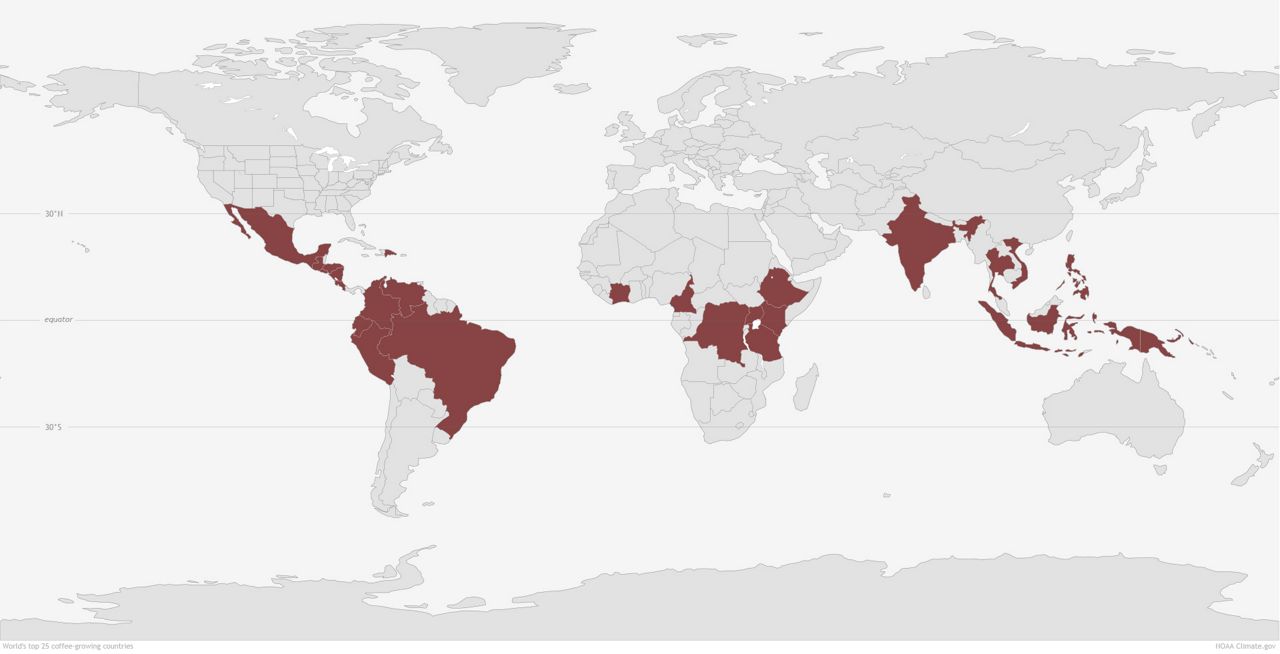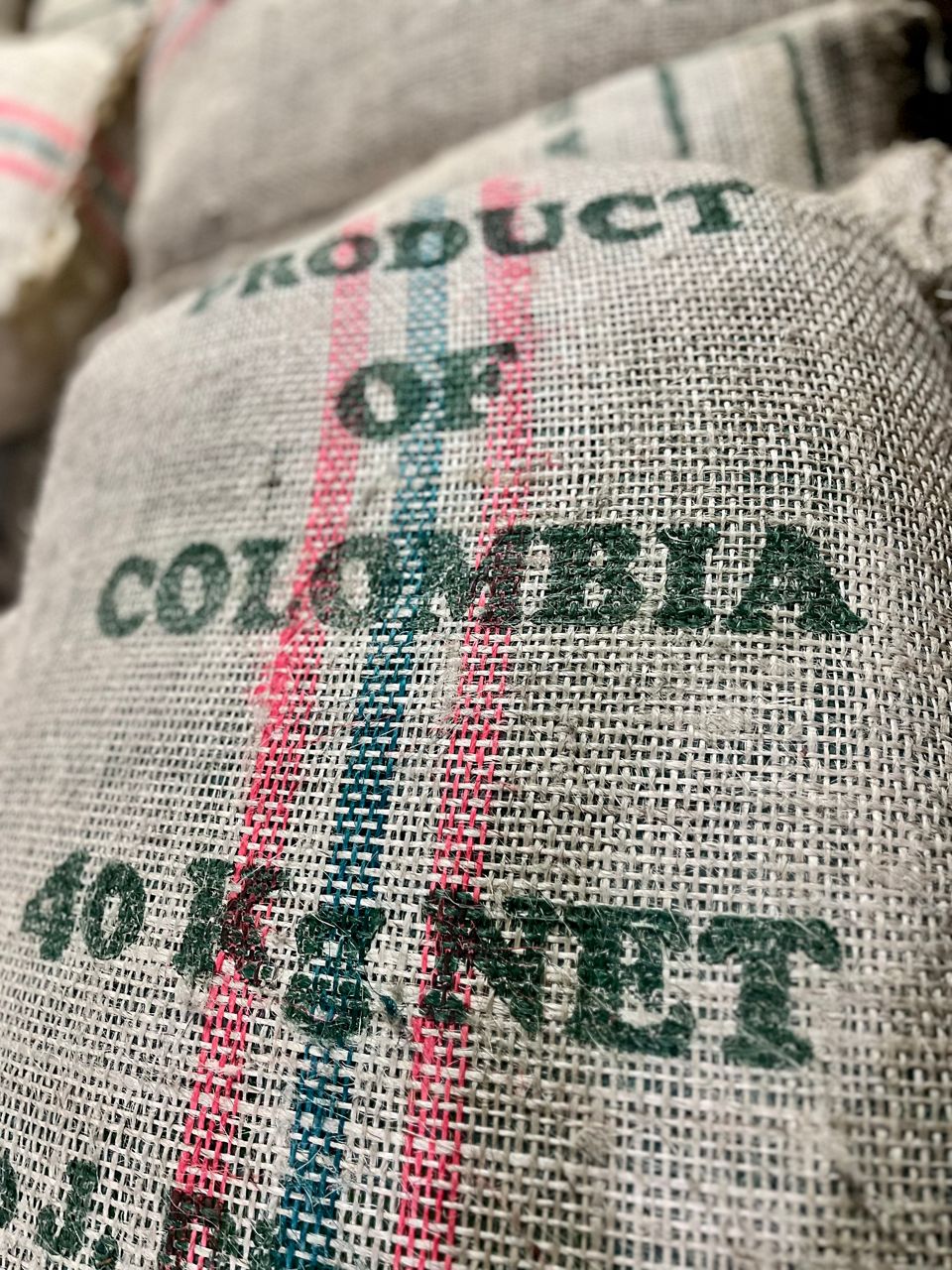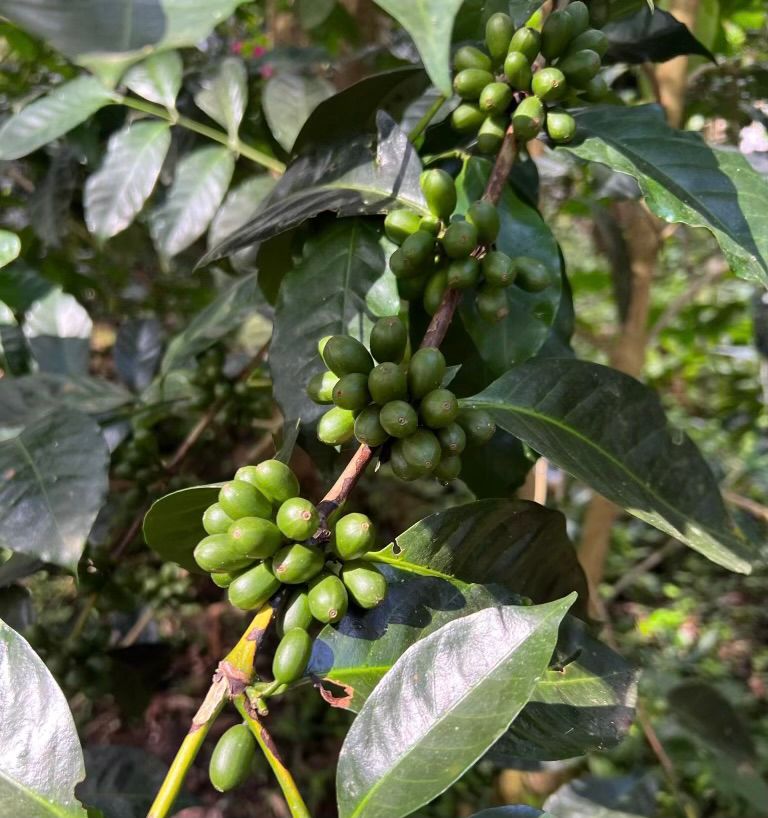Whether it’s first thing in the morning, a mid-afternoon pick-me-up or your dessert at night, it’s safe to say that a cup of coffee is a staple of many people’s daily routine. But have you ever thought about where your coffee comes from?
Coffee-growing weather
Like any other plant, coffee plants have specific needs and conditions in order to thrive. Coffee plants thrive in a temperate or tropical climate with no frost or freezing temperatures.
Arabica coffee, which makes up approximately 70% of coffee grown in the world, has an optimal temperature range between 64 to 70 degrees. If the plant is exposed to cold temperatures and frost, or warm temperatures near 86 degrees or higher, it can severely damage the plant and degrade the quality of the bean.
They also need plenty of (but not too much) sunshine and water with high humidity. Those growing conditions typically lend themselves to mid-to-high elevation regions close to the equator, which is what’s known as the “coffee belt.”
Coffee beans on the plant at Hacienda El Roble in Los Santos, Santander, Colombia. (Photo by Claudia Araque)
“Coffee belt”
Most of the world’s coffee grows in the equatorial region of the Earth between the Tropic of Cancer and Tropic of Capricorn. That area is known as the “Coffee Belt” and it includes more than 50 countries in North, Central and South America, the Caribbean, Africa, the Middle East and Asia.

Map showing the world’s top 25 coffee-growing countries. (NOAA/Climate.gov)
Brazil is the world’s largest coffee-producing country, responsible for almost 40% of the world’s coffee. The climate in parts of Brazil, specifically the southeastern part, is perfect for outdoor growing.
After Brazil, the world’s largest coffee producers are Vietnam, Colombia, Indonesia and Ethiopia.

A 40 kilogram bag of coffee prepared for shipment at Hacienda El Roble in Los Santos, Santander, Colombia. (Photo by Claudia Araque)
Coffee in the United States
What about the United States? The U.S. is the world’s leading coffee importer, after all. Coffee can grow in some parts of the country, but since the growing conditions are so specific, it’s hard to check all the boxes.
Only three places in the U.S. grow coffee with decent volume and quality, and only one of them is in the continental U.S. It’s Hawaii, Puerto Rico and southern California.
Hawaii is the most notable of the three, known for growing its famous “Kona coffee.” Hawaii’s elevation along with volcanic soil rich with minerals and healthy rain chances give it its unique flavor, and the ability to grow all year.
Puerto Rico, similar to other areas in the Caribbean, doesn’t have to worry about the cold weather damaging crops and has high enough elevations to accommodate coffee plants. Production peaked in the 18th and 19th century, but an emphasis on sugar cane crops, along with hurricanes and tropical storms, has limited the growth potential.
Southern California is the only suitable place in the continental U.S. that produces coffee commercially, and it’s all in the hills around Santa Barbara. The coffee plants grow under the canopies of avocado trees for shade, with special irrigation systems.
The future
In a warming world, climate change could lead to a change in coffee-growing zones. According to an IPCC report, climate change could reduce worldwide yields on average and decrease coffee-suitable land by 2050.
The study says that countries could see considerable losses in coffee-growing land. Among the worldwide leaders in production, Brazil could lose up to 25% loss, Indonesia’s decrease could be up to 21 to 37% and areas in Africa could lose up to 50% by 2088.
Warmer temperatures could also exacerbate pests and plant disease that cause damage to coffee plants and have a negative impact on coffee production.
Our team of meteorologists dive deep into the science of weather and break down timely weather data and information. To view more weather and climate stories, check out our weather blogs section.

